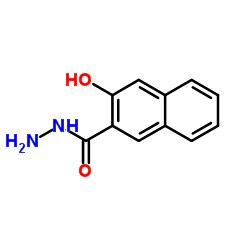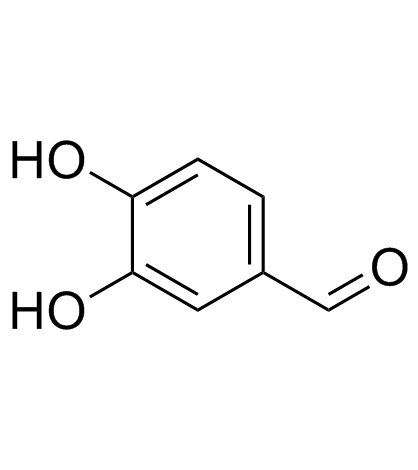| Description |
Dynasore is a cell-permeable dynamin inhibitor with an IC50 of 15 μM.
|
| Related Catalog |
|
| Target |
IC50: 15 μM (GTPase activity of dynamin1 and 2)[1]
|
| In Vitro |
Dynasore interferes with the GTPase activity of dynamin1, dynamin2, and Drp1, the mitochondrial dynamin, but not of other small GTPases. Dynasore acts as a potent inhibitor of endocytic pathways known to depend on dynamin by rapidly blocking coated vesicle formation within seconds of dynasore addition. Two types of coated pit intermediates accumulate during dynasore treatment, g-shaped, half formed pits and O-shaped, fully formed pits, captured while pinching off[1]. Dynasore inhibits HSV-1 and HSV-2 infection of human epithelial and neuronal cells, including primary genital tract cells and human fetal neurons and astrocytes. Dynasore reduces the number of viral capsids reaching the nuclear pore if added at the time of viral entry and that, when added as late as 8 h postentry, dynasore blocks the transport of newly synthesized viral proteins from the nucleus to the cytosol[2]. Dynasore prevents ischemia/reperfusion induced elevation of left ventricular end diastolic pressure. Dynasore also decreases cardiac troponin I efflux during reperfusion and reduces infarct size. In cultured adult mouse cardiomyocytes subjected to oxidative stress, dynasore increases cardiomyocyte survival and viability[3].
|
| In Vivo |
Dynasore ameliorates the motor dysfunction greatly at 3, 7, and 10 days after SCI in rats. Dynasore significantly enhances motor function which may be by inhibiting the activation of neuronal mitochondrial apoptotic pathway and astrocytic proliferation in rats after SCI[4].
|
| Cell Assay |
Mouse ventricular myocytes are isolated from male adult C6/Black mouse. Cardiomyocytes subjects to 2 hours of drug treatment followed by oxidative stress (30 µM H2O2 for 35 min). For ATP supplement experiments, the cells are treated with 3 mM ATP for 30 min before exposure to H2O2. Cardiomyocyte survival and viability are analyzed by trypan blue exclusion (TBE) assay[3].
|
| Animal Admin |
Rats: In the dynasore groups, the rats are given dynasore immediately at a dose of 1, 10, or 30 mg/kg through intraperitoneal injection after SCI, while the rats in the sham and SCI groups receive DMSO (same volume as dynasore groups) through intraperitoneal injection[4].
|
| References |
[1]. Macia E, et al. Dynasore, a cell-permeable inhibitor of dynamin. Dev Cell. 2006 Jun;10(6):839-50. [2]. Mues MB, et al. Dynasore disrupts trafficking of herpes simplex virus proteins. J Virol. 2015 Jul;89(13):6673-84. [3]. Gao D, et al. Dynasore protects mitochondria and improves cardiac lusitropy in Langendorff perfused mouse heart. PLoS One. 2013 Apr 15;8(4):e60967. [4]. Li G, et al. Dynasore Improves Motor Function Recovery via Inhibition of Neuronal Apoptosis and Astrocytic Proliferation after Spinal Cord Injury in Rats. Mol Neurobiol. 2016 Nov 7.
|



